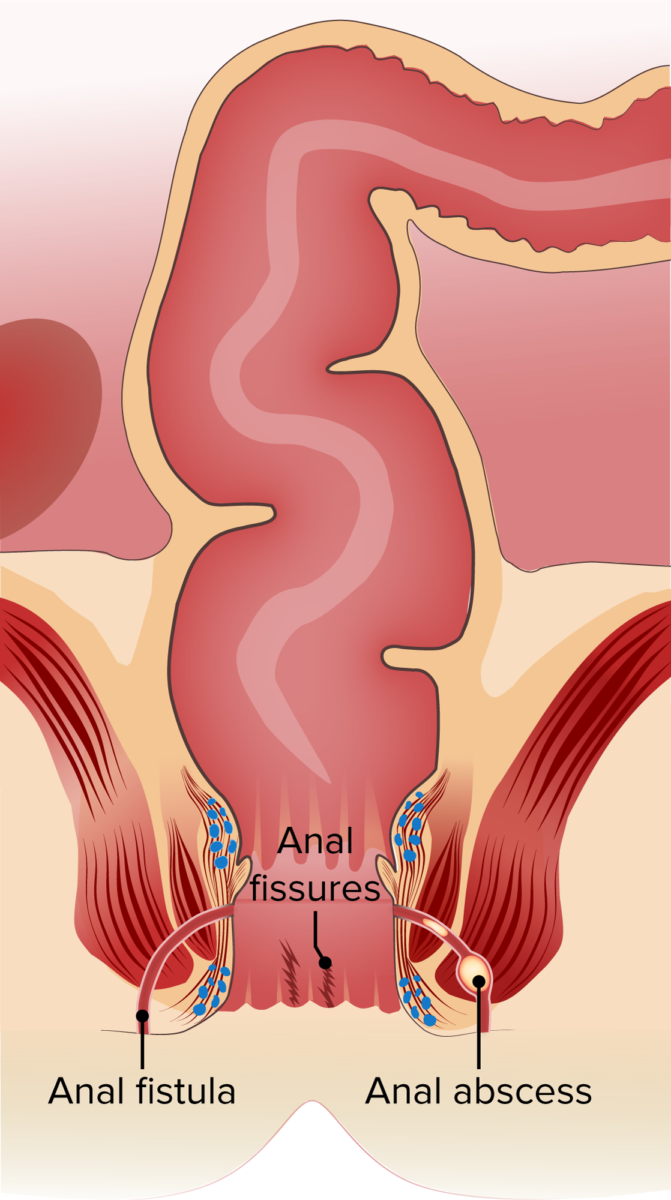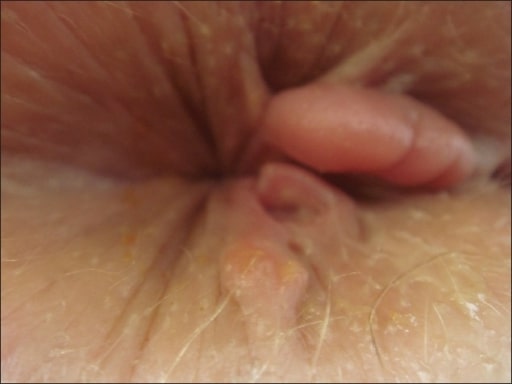An anal fissure is a painful superficial tear of the epithelial lining (anoderm) of the anal canal. Anal fissures most often occur secondary to local trauma or irritation from constipation, diarrhea, anal intercourse, or perineal lacerations during childbirth. Treatment is generally conservative with stool softeners, bulking agents, sitz baths, and/or topical vasodilators.
Last updated: Apr 29, 2025

Anal disorders: fistula, fissures and abscess
Image by Lecturio.
Chronic anal fissure and marisca (large kind of haemorrhoid)
Image: “Chronic anal fissure and marisca” by Department of Dermatology and Allergology, Hospital Dresden-Friedrichstadt, Academic Teaching Hospital of the University of Dresden, Friedrichstrasse 41, Dresden, Germany. License: CC BY 2.0Mnemonic:
The D’s of anal fissures Anal fissures A painful linear tear at the margin of the anus. It appears as a crack or slit in the mucous membrane of the anus and is very painful and difficult to heal. Constipation:
The following information is based on the practice guidelines from the American Society of Colon and Rectal Surgeons and the American College of Gastroenterology. Management may be area-dependent; UK guidance on therapies, duration of treatment, and referral indications may vary slightly by clinical commission group.
Non-operative treatment:
Goals:
Treatment may include: